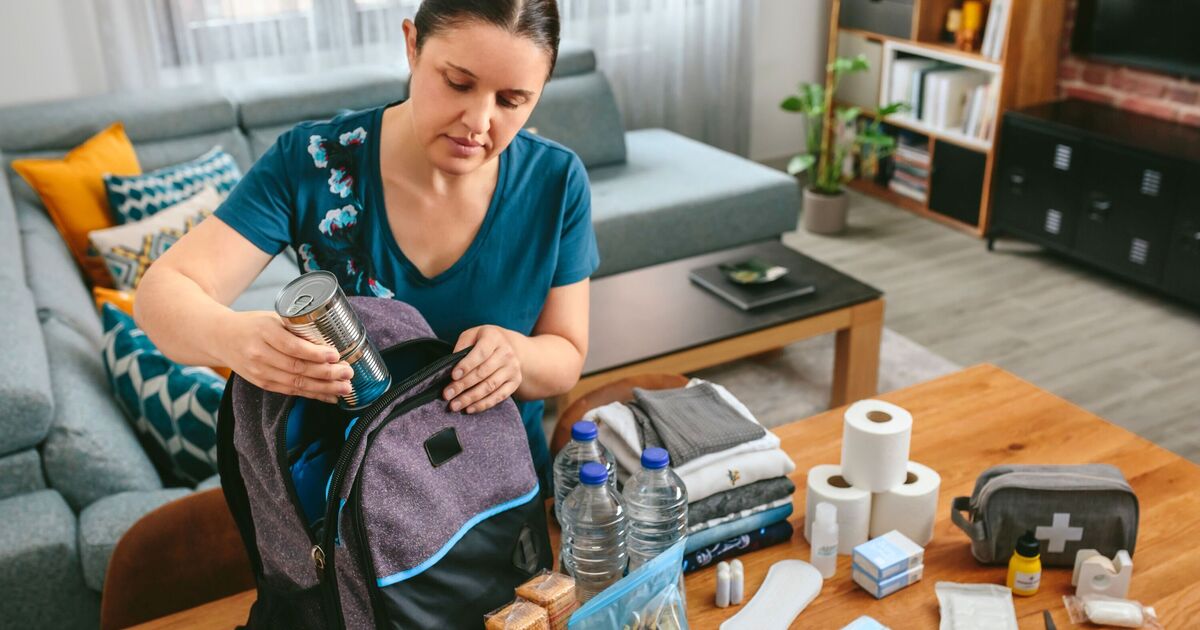Households across the UK are being urged to stash a ‘grab bag’ in their home in case of an emergency – including an outbreak of war.
Emergencies can unfold quickly in a matter of hours, or even minutes, and can last for several days and months, sometimes when least expected. Such situations can be a result of extreme weather conditions like flooding or wildfires, or other natural hazards that spark power cuts or leave communities cut off. But emergencies can also stem from conflict and war.
While there is no immediate threat of war in the UK, ongoing conflict in Ukraine and tensions in the Middle East are creating a more volatile international environment, while there are also threats posed by cyberspace and potential chemical and nuclear attacks.
Ministers are stepping up calls for the whole of society to become more resilient and plan to carry out a cross-government exercise on how to deal with crises.
In a new security strategy published in June, it said: “Some adversaries are laying the foundations for future conflict, positioning themselves to move quickly to cause major disruption to our energy and or supply chains, to deter us from standing up to their aggression.
“For the first time in many years, we have to actively prepare for the possibility of the UK homeland coming under direct threat, potentially in a wartime scenario.”
In its advice on preparing for emergencies, the UK government is recommending that people stash a ‘grab bag’ in their home packed full of essential items.
This bag should contain essential emergency supplies that will be helpful in events like power or water outages, or if you need to evacuate your home for safety reasons.
The government said: “Consider what supplies you and your household might need during an emergency lasting a few days, such as a power cut or water outage, or situations where you are advised to stay at home or to leave your home (evacuate) for safety reasons.
“It can be helpful to keep these items in one place in your home and ideally somewhere easy to find if the lights aren’t working – if you are escaping your house due to a fire you should not take anything with you at all.
“You could consider keeping items you might need to take with you if asked to leave your home quickly in a spare bag – you might hear some people call this a ‘grab bag’. You should ensure you have enough of the medication you need to keep you going for several days.”
Essential items that are useful to stash in your grab bag, according to the government, include:
- A battery or wind-up torch – torches are safer than candles
- A portable power bank for charging your mobile phone
- A battery or wind-up radio to get updates during a power cut – a car radio can also be used, but in severe weather it might be safer to stay inside
- Spare batteries for torches and radio and a backup battery for any medical equipment you rely on
- A first aid kit including items like waterproof plasters, bandages, a thermometer, antiseptic, eyewash solution, sterile dressings and gloves, medical tape for dressings and tweezers
- Hand sanitiser and wet wipes for hygiene purposes when the water is off
- Bottled water – the government says there’s no standard figure for this as emergencies can vary in duration and people use different amounts, but a minimum of 2.5 to 3 litres of drinking water per person per day is recommended by the World Health Organisation for survival. 10 litres per person per day will make you more comfortable by also providing for basic cooking and hygiene needs, and additional water might be needed to make up baby formula, for medical devices and for pets.
- Non-perishable food that doesn’t need cooking, such as ready-to-eat tinned meat, fruit or vegetables (and a tin opener). As with water, how much you need will vary based on your own circumstances. Don’t forget food for pets.
- Baby supplies such as nappies and baby formula – ready made or ‘ready-to-feed’ formula is best as you may not be able to boil water or sterilise bottles.
Government advice says these items don’t all need to be bought at once and can instead be added to an at-home emergency kit over time.

